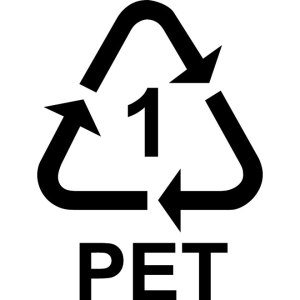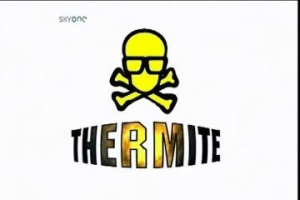This is a quick post about polyethylene terephthalate. Basically we found this brilliant ad for terylene by M&S and I decided that I would have to share it with you (is it just me or have Gap adverts been inspired by this). Polyethylene terephthalate is the forth most common synthetic polymer and it pops up as ‘terylene’. The advert shows that it’s cultural history is as interesting as its chemistry ( apparently ranked 87 in the most important British innovation of the twentieth century). Terylene was seen as the material of its time, discovered and patented by Whinfield and Dickson in 1941, it’s first commercial use was in 1948 when it was used to make lace curtains. Watch the advertisement above and see just what a revolutionary material terylene was – the promise of a hardwearing, crease resistant material seemed too good to be true and of course it was ! The big problem with terylene is that it is waterproof and during the summer it can be an uncomfortable material to wear as it does not absorb sweat like cotton does. Now natural fibres such as cotton and linen are seen as much more desirable as they are seen as sustainable and are considered to be carbon neutral.

Interestingly, polyethylene terephthalate is also used as the world’s packaging choice for many foods and beverages because it is hygienic, strong and lightweight. Check any soft drink bottle and you will see the PET symbol indicating that it is made of polyethylene terephthalate. The starting materials for this plastic are oil based but it can be recycled. The European recycling rate is 57% and it is the most recycled material. Demand for PET is rising with polyester and food and beverages industries determining market behaviour. At present annual world wide production of PET is approximately 40 million tonnes with 65% used to make fibres, 5% for film and 30% for packaging. Polyethylene terephthalate is made by the polymerisation of benzene-1,4-dicarboxylic acid and ethane-1,2-idol. This makes pelts of the polymer which are then melted and squeezed through fine holes to form a fibre (terylene). To make PET used in plastic bottles, the pellets are further heated to a molten liquid stage and the polymer chains stretched in two directions. The polymer is then cooled quickly while it is stretched, the chains are frozen with their orientation intact leaving an extremely tough material.
Looks like this polymer will continue to shape our world – Apple announced this week that they have been developing ways to make their phone screens shatterproof and one patented idea is to use tabs to surround the phone to act as shock absorbers with the suggestion that they could be made from polyethylene terephthalate. So it looks like the exam board have missed a trick using the term ‘terylene’ in the specification, polyethylene tetraphthalate is so much more than a dated clothing fibre !

